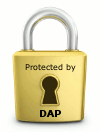Fred Bartick, a Minnesota-based (Bloomington, MN) skate technician with over 35 years of experience, continues his discussion of boots and blades with tips for proper blade care. (See Part 1 of the series here and Part 2 of the series here and Part 3 of the series here. See Part 4 of the series here and Part 5 of the series here.)
Good blade care depends on keeping the blades dry when not on the ice. Fred recommends having a dedicated blade drying towel to dry the blades thoroughly when done skating. To transport the skates, he recommends having some kind of fabric (terry cloth) covering, often called soakers. The purpose of the soakers is to prevent the blades from knocking against anything (each other) and creating nicks or gouges in the edges. Once a skater gets home, Fred recommends taking the soakers off, drying the blade again, and leaving the blades sit for a couple of hours on a carpeted surface without anything covering them. He also suggests turning the soakers inside out so they can dry thoroughly. After a few hours, the soakers can be placed back on the blades.
Fred says, “I recommend having rubber guards on your blades as little as humanly possible.” Use rubber guards only to walk from where you get off the ice to where you sit down to remove your skates. Rubber guards get moisture and dirt and even small pebbles in them, and by walking a lot in guards you risk rusting and edge degradation, requiring more frequent sharpenings. Blades should never be stored in rubber guards. To prevent guards from dulling the blades, Fred recommends cleaning the rubber guards from time to time. This can be done with water and a narrow brush, and guards can even be put in the dishwasher.

Sorry, this content is for members only.Click here to get access.
Already a member? Login below… |

 Add to "My Favorites" (Beta testing)
Add to "My Favorites" (Beta testing)

